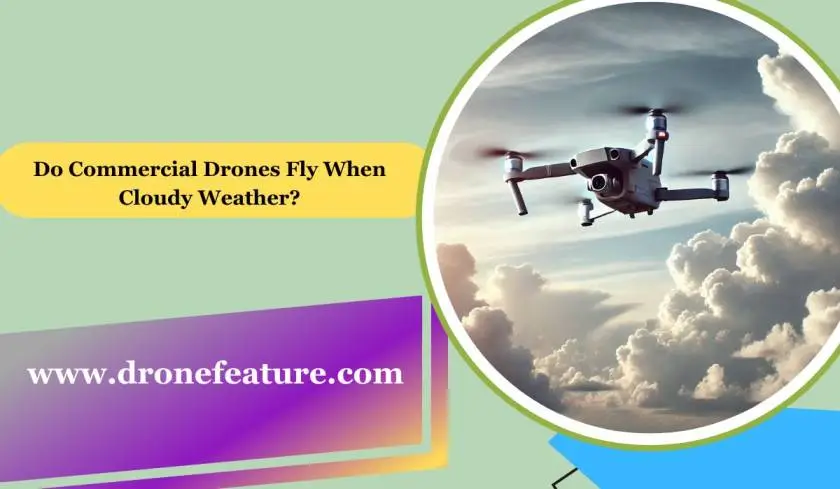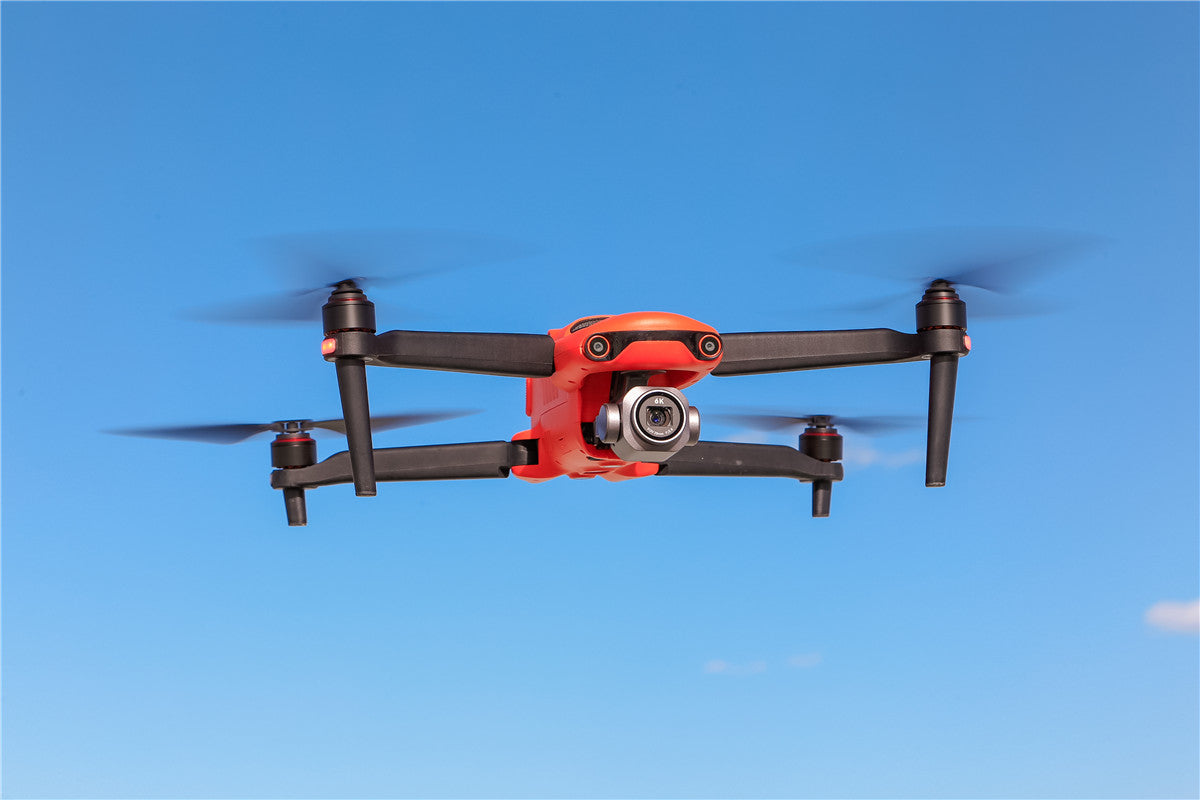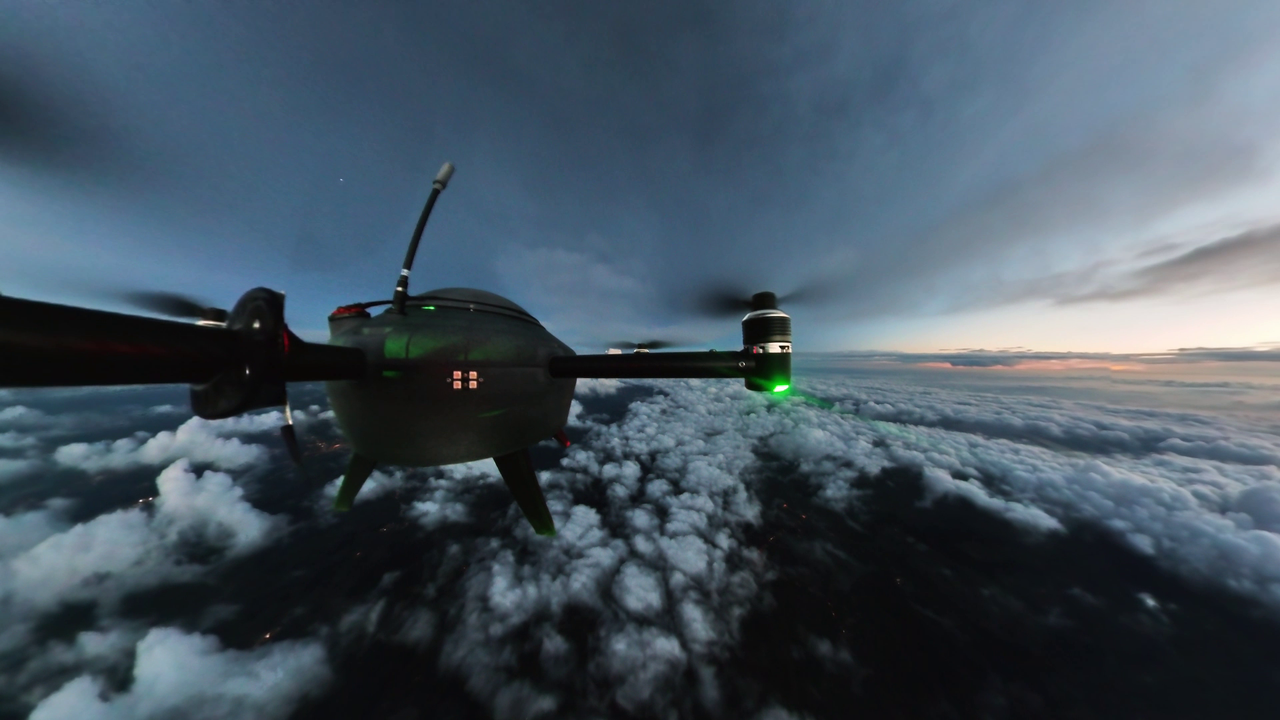
Do Commercial Drones Fly When Cloudy Weather: A Complete Guide
Do commercial drones fly when cloudy weather? In the current environment, drones are growing in popularity and demonstrating their value in a variety of industries for tasks like surveying and data collection. Drones are capable of producing high-quality aerial images and videos for analysis, mapping, and inspection. It is important to realize, though, that not all weather conditions are suitable for drone flights.
Extreme temperatures, high humidity, rain, and cloud cover are examples of weather conditions that can impact drone operations and cast doubt on the reliability of the data gathered. Therefore, it's critical to consider how weather can affect drone operations and make sure the weather is suitable for drone flying.
What Do Commercial Drones Fly When Cloudy Weather?

When it comes to drone operations, weather plays a significant impact. Drone performance, accuracy, and data collection can be impacted by a number of factors. Temperature, wind, humidity, rain, and cloud cover are some of the main variables that impact drone surveying. How much rocket fuel does a drone use satisfactory?
Read Also: DJI Mini Pro 3 with RC How Does Recording Work?
When organizing a drone survey, wind is a crucial meteorological consideration. Drone stability can be impacted by strong gusts, which could result in inaccurate data collection and even crashes.
In windy conditions, the drones may be shaken and find it difficult to stay in place. When the drone is unstable, its impact will be visible on the photos, making them unclear and unreliable. Therefore, before launching the drone into the air, drone pilots should always be aware of the wind speed.
Drone operations can potentially be impacted by severe temperatures in addition to wind. Drone batteries deplete more quickly during severe winters, which forces you to put the drone down quickly and leaves the data collection unfinished. Bad weather might cause the battery to overheat and limit its life. Drones should therefore not be flown in extremely hot or cold conditions.
Similar to high winds and extremely high or low temperatures, humidity can affect drone performance and image quality. Humidity can cause the drone camera's lens to become wet, resulting in hazy photos. Therefore, be cautious that photos or videos captured by drones could not be useful. How much rocket fuel does a drone use satisfactory?
The Impact of Wind on Drone Surveying Accuracy
Wind can completely undermine drone surveying efforts since the data and pictures gathered won't be sufficient and may not be used as the basis for critical decision-making.

Winds can cause collisions in addition to impairing the drones' capacity to stay stable in the air. Drones can malfunction or even shut down entirely when they crash. The surveying and data collection effort may need to be redone, and this can result in severe financial strain.
Read Also: Can I Buy Insurance on My Drone After Having Accident?
Following the manufacturer's recommended wind speed restrictions for the drone is always advised because, if you are aware of them, you won't put the drone at risk from excessively high wind speeds. Want to know how much rocket fuel does a drone use satisfactory?
Temperature Impacts on Drone Flight and Battery Life
Drone battery life and flight duration are significantly impacted by temperature. Drone battery performance may be hampered by extremely high or low temperatures. Extremely low temperatures shorten battery life, which means there is less time spent in the air collecting data. Drone motors may have to work harder in freezing temperatures, which might lead to a snowballing increase in power consumption.
Rather, excessive heat can shorten battery life and induce overheating. High temperatures can cause drone batteries to deplete more quickly and eventually lose capacity, which will shorten flight time and impair performance. It is best to fly drones in temperatures between 0 and 40 degrees Celsius. Drone battery life and flight duration might be negatively impacted by outside use.
Humidity Can Degrade the Quality of Images and Drone Performance
Similar to winds, drone stability may be impacted by heavy humidity. Drones find it difficult to maintain a constant position when flying in heavy humidity. This may result in hazy visuals, which makes it challenging to review and comprehend the survey data. Can drones do what firemen do?
Excessive humidity might generate condensation on the drone's camera lens and impair drone stability. Consequently, survey photos may be hazy, which lowers the quality of the data. Drone pilots should only operate their devices in environments with humidity levels between 30% and 70%. Drones may waver if they are flown beyond of this range, which could affect the quality of the data gathered while surveying and the photographs taken.
Why Is It Bad to Fly Drones in the Rain?
Drones' electrical components could be harmed if they fly in the rain. Water intrusion into the drone's components could result in partial or total failure. Drone surveys conducted in areas with a lot of clouds may not produce high-quality photographs because the cameras' visibility may be reduced.
Related Post: What Kinds Of Companies Use Drones For Photography And Videography?
It can be difficult to analyze the photos because they can be darker. In addition, limited visibility due to cloud cover might increase the likelihood of crashes with obstructions. Delaying a drone fly when it is raining or overcast is always preferable. Awaiting clear weather guarantees both the accuracy of the data and the safety of the drone.
How Can Drone Surveying Be Compromised by Sunlight and Shadows?
When flying drones, it's important to pay attention to sunlight and shadows. The amount and angle of sunshine can have an impact on the quality of the images and the information gathered. The Sun may cast shadows that obscure features in pictures if it is directly overhead. On the other hand, when the Sun is going to set, it may cast lengthy shadows that obscure crucial information and make it difficult to analyze and interpret.
A drone pilot should constantly consider the Sun's position and how it affects shadows. Early morning or late afternoon, when the sun is shining at a lower angle and there aren't many shadows, are the best times to fly drones for surveying. Can drones do what firemen do? yes, you can use drone for firemen?
Can Drones Do What Firemen Do? Safely and Effectively
Yes, what firemen do when safely and effectively using a drone. Before operating a drone, it is always a good idea to keep an eye on the weather. Check the weather in the area where the drone will be flown before each flight. Before operating a drone, the following actions should be followed to check the weather.

Wind direction and speed should be monitored: The drone manufacturer's suggested wind speed should always be adhered to. The drone may lose its equilibrium and crash if it is set too high. Temperature Monitoring: When flying a drone, a pilot should pay attention to the current temperature as well as any forecasts. Make sure the temperature is within the ideal range for drone operation.
It is necessary to provide humidity levels. Heed: Verify that there isn't an excessive amount of dampness. If so, it may have an impact on image quality. Look for rain and cloud cover: Control whether there will be rain or cloud cover during the flight. In this post, what you want to know about the do commercial drones fly when cloudy weather?
Avoid flying when it's raining to prevent the drone from getting wet. Drone operators can determine whether flying their drones is safe by doing comprehensive pre-flight weather assessments. This helps guarantee the accuracy of the data and the safety of the drone.
Final Thoughts
Do commercial drones fly when cloudy weather?Before conducting drone operations, the weather should always be taken into account. Operators can guarantee the effectiveness of their operations and gather accurate data for analysis and decision-making by utilizing weather data.
Deliberate weather conditions are necessary if you want to become an expert drone pilot and make sure you know everything you need to know. Successful surveying depends on your ability to comprehend how weather can affect your drone operations.
In addition to monitoring the weather, you should make sure you have the necessary certification for commercial drone flight and are knowledgeable in drone operation. You may always sign up with Flapone Aviation to receive drone piloting training. Why are you waiting for? This place offers excellent drone pilot instruction at a reasonable cost.


